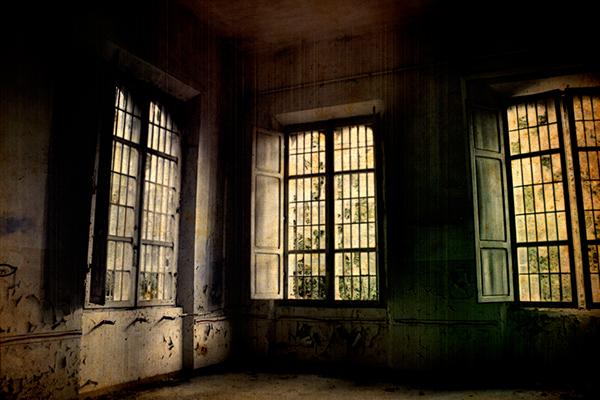A review of the literature, published in Lancet Psychiatry, explores the history of asylums in the United Kingdom. The author, Rab A. Houston, professor of modern history at the University of St. Andrews, attempts to offer a more nuanced view of asylums, in contrast to the predominant, black and white ways of perceiving them as entirely good or bad. He aims to discourage the complete dismissal of inpatient psychiatric care as a form of treatment — and instead, to encourage mental health practitioners to learn from the past through looking at both the previous successes and failures of asylums.
“Consciously or otherwise, perceptions of the here and now are based on conceptions of the past that might be one dimensional at best and misguided at worst. In particular, the mental map of asylums’ past is sharply contrasting (e.g. humanity vs barbarity, knowledge vs ignorance, and good practice vs bad practice), which does not allow for the shades created by the ideological and cultural context in which different locations and types of mental health care have been provided over the past two centuries,” writes Houston.

Institutionalization of psychiatric populations has a contentious history and is still a topic of debate. Some argue that it is a good idea gone wrong, in some cases, whereas others believe that asylums are inherently dehumanizing. Houston attempts to offer a middle ground, exploring a history of asylums using a “bottom-up approach,” or including the perspectives of patients, staff, volunteers, and families, as well as local communities’ experiences of asylums. He argues that this bottom-up approach to understanding allows for an exploration that includes both the positive and negative, the successes and failures, rather than focusing heavily in one camp or the other.
The author highlights the political ideologies underlying supporters and opponents to asylums in their early development. Early asylums were initially private and voluntary but became outnumbered by public asylums during the mid-to-late 19th and early 20th centuries. The push for public asylums was inspired by liberal ideologies that promoted state intervention and the improvement of society, although supporters were found on either side of the political aisle. Supporters believed that county asylums would help serve middle-class families who did not have access to the care provided by the social welfare system, but could not afford care at expensive private asylums. Opponents of public asylums were typically members of the conservative political party, which advocated against government intervention and taxation, believing them to be infringing upon their fundamental rights.
In addition, asylums appeared to value public opinion, as shown through annual asylum reports which document prevention of suicide. This was used to demonstrate to the public that it harbored a caring, controlled environment. Patient newsletters, which sought to normalize institutional living, served a similar purpose. Asylums valued their relationships with local entities and individuals, such as communities, medical practitioners, and families, understanding that their very existence depended on this relationship.
Public perception of asylums in the 19th and 20th centuries was dependent on the cultural context. In Scotland, in-home care by the family was valued. Domestic settings, including the private homes of farmers, were used in the treatment of those labeled as ‘mentally ill’ or ‘intellectually disabled.’ The Welsh also valued in-home care, which delayed Welsh institutionalization until the 20th century. On the contrary, Ireland lacked social services due to lack of legislation, polarized social viewpoints, and intense rural poverty. As a result, Ireland’s use of inpatient care was significantly higher than England, and ultimately the rest of Europe, in 1900.
Movements for institutional reform began in the 19th century and led to developments such as the use of unlocked wards, voluntary admission to public asylums, and the building of “village-style” or “garden-city” asylums, which integrated the landscape and environment, and therapeutic treatment. Those fighting for reform accused asylums of being inhumane, totalitarian, overcrowded, and more, which ultimately fueled the movement for deinstitutionalization. Those in favor of inpatient care believed the opposite — asylums provided a safe space for those who could not function in society. Houston reflects that many psychiatrists still hold this belief today, that an institutional environment is crucial in facilitating therapeutic change and rehabilitation of individuals back into society.
Houston points to the detrimental effects of the closing of asylums, and push for outpatient care. These institutions were major employers, so the loss of jobs with deinstitutionalization impacted communities, especially affecting those in rural and semi-rural settings. Additionally, mental institutions served as an alternative to prison for those diagnosed with mental disorders found guilty of criminal acts. With deinstitutionalization, access to this option became limited and/or unavailable. Further, the reformation of asylums led to changes in laws, which ultimately led to the creation of the welfare state in England.
Moreover, the reformation of asylums spurred new approaches to treatment, and also, Houston argues, contributed to an increase in clinician pessimism, as they felt like they could do nothing to improve the lives of ‘those with disabilities.’ This attitude is tied to beliefs about the inferiority of certain human beings, such as those with learning or intellectual disabilities, which fueled the eugenics movement at the time. It was also reflective of assumptions that mental health issues, sexually transmitted infections, and alcohol and drug abuse were the result of a moral failing or weakness — and therefore unable to be successfully changed or treated.
Another consequence of deinstitutionalization is the emergence of psychosocial approaches to treatment. These approaches worked to help patients reintegrate into society following treatment in order to reduce readmission.
An exploration of patient documentation, including letters, reveals that patients, not surprisingly, report a variety of experiences. Some patients report abusive, anti-therapeutic treatment, while others write of their asylum experience as being transformative and key to their healing. Largely, however, it appears that patients were ambivalent toward their treatment, with their perceptions of their experience in treatment changing throughout their time in the institution.
Additionally, patient advocacy groups have fought for patients’ rights and treatments since the Victorian Era. These groups have had a large impact on the adoption of legislation, such as the decriminalization of suicide in England and Wales in 1961, that upholds the human rights of those suffering from mental health issues. Houston highlights factors including liberalism, libertarianism, psychiatric reform, and fiscal conservativism, as being key to the major changes that have occurred in mental health treatment — particularly, balancing the power between patients and clinicians and deinstitutionalization.
The current review offers an approach to understanding the history of asylums that allows for a more balanced view, one that takes into account the positive and negative impacts of institutional care in the 19th and 20th centuries. Having a better understanding of past successes and failures will open up possibilities for future approaches to treatment, that are not guided by ideological thinking, but rather historical evidence and support.
****
Houston, R. A. (2019). Asylums: The historical perspective before, during, and after. Lancet Psychiatry,1-9. (Link)















“black and white ways of perceiving them, as entirely good or bad. He aims to discourage the complete dismissal of inpatient psychiatric care as a form of treatment – and instead, to encourage mental health practitioners to learn from the past through looking at both the previous successes and failures of asylums.”
“Having a better understanding of past successes and failures will open up possibilities for future approaches to treatment, that are not guided by ideological thinking, but rather historical evidence and support.”
Yes I am certain we can do this, all of us working towards a not so B/W thinking. All of us working towards the idea that institutionalization is okay. We will just educate those working with the humans that need to be penned up. I was not aware that they needed to be educated, interesting though.
I wonder when the B/W thinking was made popular, it seems the author has some idea that opposing views are B/W thinking. We need softer shades of greys.
As soon as psychiatry lets go of ideological thinking, that B/W thinking, perhaps less will be seen as needing the asylums.
Report comment
Releasing a wrongfully accused prisoner after a number of years would also produce similar problems. Lack of employment history, etc.
If he has been manhandled routinely in prison by the guards so he suffered extensive TBI and nerve damage it will be still worse. Yet no one would oppose his release and pretend it was an act of kindness!
Report comment
I would support the concept of asylums but in the early sense of the word: places of refuge. However, I fail to see why care would need to be involuntary.
Report comment
I wasn’t aware that the predominant view today is black-and-white. Either all good or all bad with regard to asylums. No-one I’ve ever met, at least. I’m quite sure these kinds of (false) assertions are just plucked out of thin air … makes for a nice article, though, I suppose … begs gullibility … I suppose if you were (temporarily) incarcerated in an institution led by academics with the mindset of Pavlov, your in for a rough ride …
Report comment
Most Western countries, in the 19th century, viewed asylums as a respite. Like recovery from pneumonia. Today, with biological psychiatry, it’s much worse. Now, your confronted with tardive dyskinesia, tardive dysmentia, tardive psychosis, tardive dysphoria.
Another interesting fact, with regard to asylums, is that the total number incarcerated in any one year, was about 0.3% to 0.4% of the population (for whatever reason). If, today, 1% is estimated to suffer from the most severe, chronic and debilitating form of mental illness, schizophrenia, it really begs the question …
Report comment
The “mental health” system makes reintegration into mainstream society impossible.
I have never been in a true asylum myself–or the modern version called the state mental hospital. But once people in your community know your status as a “severely mentally ill” individual they treat you worse than a felon.
I find the whole concept of mental illness intellectually problematic.
Is it poor cognitive skills? No. That’s called “developmental delay” or whatever the popular term is now. It seems–according to prominent experts on mental illness–that it is bad behaviors impossible to overcome without their help.
“Symptoms” of “bipolar” include rage, pride, lust, and greed. Traditionally called sins. According to psychiatrists certain people have no agency and can never change. This dates back to the Victorian concept of “criminal types” who could be labeled defective by low foreheads and hairy hands and skull size. Assuming you were white. Everybody else was automatically judged defective.
Many here can testify to how wrong these alleged experts are.
Somehow it’s innately biological AND a moral defect at the same time. How can this be? It leads to being treated worse than a convicted felon. Rather than judging you on the content of your character people will judge you on what some shrink who talked to you for fifteen minutes decided. And your bad drug reactions.
So there’s the prejudice (premature judgments with no regard to actual behavior.) Prominent psychiatrists go to great lengths to promote this.
People can change their behaviors without medical help. Human beings have been doing it for ages. But everyone assuming the worst of you makes change impossible till you relocate and start over.
The drugs and shocks make gainful employment–needed for housing usually–difficult if not impossible. Suffering from GI issues myself. At least it’s a great excuse to my neighbors for why I’m on disability.
So the bigotry and brain damage passed off on the public as “safe and effective treatment” are why releasing those in the asylum wasn’t much of a success.
Report comment
Now that the scientific fraud of the entire DSM “bible,” and all the “mental illnesses”/stigmatizations within it, have been confessed by the head of NIMH to be “invalid.”
https://www.nimh.nih.gov/about/directors/thomas-insel/blog/2013/transforming-diagnosis.shtml
Let’s rebuild the asylums! WTF??? Throw away your “invalid” DSM “bibles,” apologize, and end your mass murder of 8 million innocent people a year, instead. End your modern day, ongoing, psychiatric/psychological holocaust!
https://www.nimh.nih.gov/about/directors/thomas-insel/blog/2015/mortality-and-mental-disorders.shtml
The less credible the DSM deluded psychiatric and psychological industries are shown to be, the bigger their delusions of grandeur get. Just like that piece of garbage psychologist, who had delusions of grandeur I’d sign a BS “art manager” contract, which would have allowed him to steal all profits from my work, my work, my family’s money, while he took control of my story, accountants, and lawyers. No thanks, attempted thieving lunatic, I’m not signing that.
But it did take that psychologist a tremendously long time to garner insight into the meaning of the word no. I had to repeatedly remind him I wouldn’t sign a thievery contract. He couldn’t seem to understand that thievery, especially from widows in his church who, regularly and systemically, do good deeds for underprivileged children, is unacceptable human behavior.
I was forced to explain to him that it made no logical sense for an anti or critical psychiatry/psychology artist to have a psychologist in charge of her work, he couldn’t comprehend the impropriety of such. I had to explain to him that it made no logical sense for an anti-child abuse artist to have a systemic, child abuse covering up, psychologist in charge of my work.
https://www.indybay.org/newsitems/2019/01/23/18820633.php?fbclid=IwAR2-cgZPcEvbz7yFqMuUwneIuaqGleGiOzackY4N2sPeVXolwmEga5iKxdo
https://www.madinamerica.com/2016/04/heal-for-life/
He wasn’t able to comprehend that once a person has dealt with one, child abuse covering up, Lutheran psychologist. That person will never trust any Lutheran psychologist ever again. “Fool me once, shame on you, fool me twice.” No, go away! And I’ll embarrass you by pointing out your industries’ systemic child abuse covering up crimes, instead. Finally, I had to explain to that dense psychologist that I was an artist who paints for God, and that he is not God. That one did seem to wake him up a little bit.
The ELCA Lutheran religion really should rethink their trust in psychologists, rather than God. In part because all of that ELCA trusting in psychologists, instead of God, behavior is giving the psychologists staggering god complexes.
Good thing, creating art is good therapy, and I can get my anger out by painting the psychologists’ and psychiatrists’ crimes, and writing about them. But one has to wonder how long it will take for the ELCA pastors and “mental health” workers to stop attempting to murder and/or steal from me. And garner insight into the fact that running a multibillion dollar, primarily child abuse and rape covering up, scientific fraud based, “mental health” industry is morally repugnant. Especially since such systemic, child abuse covering up crimes also function to aid, abet, and empower the child molesters and child sex traffickers, which is destroying our country from within.
https://www.amazon.com/Pedophilia-Empire-Chapter-Introduction-Disorder-ebook/dp/B0773QHGPT
https://community.healthimpactnews.com/topic/4576/america-1-in-child-sex-trafficking-and-pedophilia-cps-and-foster-care-are-the-pipelines
No, rebuilding the asylums, now that the scientific fraud and systemic crimes of the “mental health” industry have been brought to light, is a bad idea. We should get the “mental health” and social workers out of the pedophile empowerment business, instead. Oh, and your systemic, child abuse and rape covering up crimes, are also giving the pedophiles delusions of grandeur they are “Mag Men,” too.
https://www.blurb.com/b/2934828-mag-men
And it’s a shame the “mental health” workers have turned my formerly Christian, childhood religion, into a systemic, child rape covering up, religion. Since, of course, that’s the opposite of a Christian religion.
https://www.amazon.com/Jesus-Culture-Wars-Reclaiming-Prayer/dp/1598868330
https://virtueonline.org/lutherans-elca-texas-catastrophe-coming-lesson-episcopalians
“Whoever causes one of these little ones who believe in me to sin, it would be better for him if a great millstone were hung around his neck and he were thrown into the sea.”
If we ignore, deny, and cover up our society’s problems, we can’t fix those problems. These massive in scale, pedophilia and child sex trafficking crimes need to be addressed, not further covered up, by our psychologists, psychiatrists, “mental health”/social workers, religions, lawyers, judges, CPS, States Attorney’s offices, FBI, etc.
I do know the “mental health” and religious workers don’t want to end their multibillion dollar, primarily child abuse and rape covering up, scientific fraud based “mental health” industry. But it needs to be put to an end, because it’s destroying our country.
Report comment
If the author thinks asylums are great or worthwhile in some way, I suggest he go live in one himself rather than help see to it that others may wind up there again.
Report comment
Ashley Bobak is not responding to any comments.
This is a short article. Obviously it can’t go into detail due to brevity.
But it fails to distinguish between voluntary or involuntary asylums. A very big difference.
Is Bobak advocating for the type of Soteria House that Loren Mosier ran till the APA cut his funding? Or the chain of asylums old “Doc” Drew wants to start?
Either way, count me out. I will never trust a shrink again after what I have experienced.
Report comment
Some “asylums” that are built today look pretty nice and include pretty good food and clean rooms. However,the basic concept of locked doors and bars on smoking lounge windows is the same. Furthermore, the drugs are more powerful and the brainwashing of the groups is probably worse than ever. I am thinking of the Lindner Center outside of Cincinnati where I went in January, 2012. Eight years ago, but it still seems quite recent.
As usual in psychiatry, the doctors will not listen to the patients when we express disbelief at the
“diagnosis”. That is the same as it has always been, I think. And although I was not forced to take my “medication”, it was implied that drugs were the only way to get “well”. There is no debate allowed to question the validity of the diagnoses or the treatment. This is the same as always, probably.
One other thing: Although I voluntarily went in there (because it was the beginning of the home invasion/ torture in my home), I still had to stay for ten days–even though I refused the drugs after the third day. I knew the drugs were not helping me and I soon realized that the group was also not helping–it was just an exercise in ridicule that included actors pretending to be mh patients. Yes, I am living in a political conspiracy.
Finally, there is ritual humiliation like having to take out your shoe laces; and having to ask the front desk for your electric razor. This is on purpose humiliation. The person at the desk pretends to care–while it becomes obvious that she despises you. This is painful and confusing for someone who really thought that Western medicine was pretty advanced and progressive–not mh care. It is still all about coercion, which to me implies a lot of sneaky, snarky trickery. It is also big, big business–it is a gravy train that is a runaway train.
Report comment
Why don’t we have a more “nuanced” history of work shops, poor houses, hard labor and concentration camps? Actually, I think we did ourselves good by getting rid of them. The Victorian monstrosity of the Kirkbride asylum is not really right where it should be, being a ruin and a relic of history. No, these Victorian monstrosities should have never been built in the first place. They represent places where people were swept under the rug so-to-speak, a number on concrete bump or slab, everybody’s shame.
This is coming up, I imagine, because people like Trump want a return to the old asylums, that is, more people, innocent people, unjustly incarcerated.
Perhaps we need a more nuanced view of Walter Freeman and ice-pick lobotomies. We could try to bring back those, too. Perhaps clozaril, or you name it, isn’t as effective as we’d like it to be.
Me, I don’t need a good knock on the head. Do you?
Report comment
I have to disagree with you. Having a roof over your head, a bed and food, when your family has ostracized you, is preferable to living on the street, especially in winter. If you look at the 19th century, most people were out of the asylums within a year or two after experiencing a bout of “insanity”.
With psychotropics, lying psychiatrists and outpatient treatment, your chance of a “normal” life are much worse today.
Report comment
https://en.wikipedia.org/wiki/Princess_Alice_of_Battenberg
Princess had the ‘privilege’ to be released into one of the better asylums in Switzerland, in 1930, well forcibly by spouse.
Interesting, they contacted Freud and without seeing her said it was “sexual frustration” and to x-ray her uterus to stop that libido.
She was lucky, in that no “seize the brain” drugs existed, so was able to live to an old age. She seems to have fallen into hands in another clinic where some sane person released her.
The drugs truly brought on nothing but heartbreak and dehumanization. Tragic. One knows psychiatry by it’s ongoing dehumanizing.
From chains to straight jackets, to lobotomies to chemical “seize the brain” straightjackets. THOSE are the reasons psychiatry resists and screams like banchees and little girls when approached about wrong doing.
It is difficult when you are raised to think about people a certain way, indoctrinated, thinking of yourself as special due to 8 years wasted on school, and realize you are no further ahead, but need to keep believing it to remain sane and employable.
It is ALL about removing themselves with will, from damage they cause.
Of course they know it’s all garbage. The most interesting thing for me about the mind is, how does one protect something that is dreadfully harmful and even give it to kids? It is absolutely exactly why we had Nuremburg trials. The difference was, that some influential people were able to bring the imposters to trial.
And those perpetrators at the trials defended their practices until the end.
Report comment